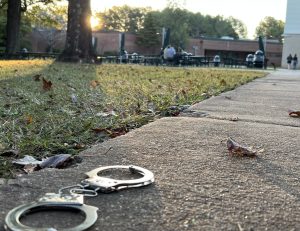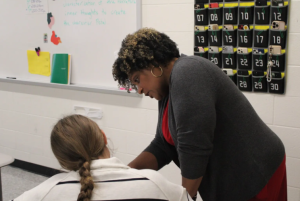EOCs are Coming to Town: A Brief Look at the 2019 EOC Schedule
Apr 24, 2019
Spring break has come and gone and state assessments are just around the corner. Here is a quick rundown of everything students should know about the exams.
Milestones and End of Pathway Assessments (EOPA) will be taking place from April 25 and May 1. Tests will happen in morning and afternoon segments. All students taking an afternoon exam will have A lunch.
- Thursday, April 25
- 8:35 – 9th and 11th Lit Section 1
- 10:50 – Architecture Draw/Design EOPA
- 12:05 – Geometry Section 1; Business and Technology EOPA
- Friday, April 26
- 8:35 – 9th and 11th Lit Section 2&3
- 12:05 – Geometry Section 2
- Monday, April 29
- 8:35 – U.S. History and Economics
- 12:05 – Algebra Section 1; Entrepreneurship EOPA
- Tuesday, April 30
- 8:35 – Algebra Section 2, Engineering and Technology EOPA, YouScience
- 10:50 – Web/Digital Design EOPA
- 12:05 – Computer Science EOPA; Nutrition, Food, and Wellness EOPA
- Wednesday, May 1
- 8:35 – Physical Science and Biology; Graphic Design EOPA
Students who are taking an exam are expected to arrive at their testing location on time. They will be placed along the English or Social Studies hallways or in the auditorium. Students taking an exam should check their testing ticket for their testing location. Late students will not be allowed in as it may disrupt other test takers. Students who miss their exams must make it up either May 2 or May 3. Days for specific make-ups will be announced closer to the end of exams.
“Be here on time every day,” said Keith Haber, the testing administrator. “It is exceedingly difficult when a student who is testing is not here and they have to take it during the make-up time. That can delay the scores coming in and that can delay the final exam. If they show up late, we may not be able to let them in testing.”
Students are expected to bring their charged Chromebooks and a pen or pencil to their testing location each day. Bags and phones are discouraged as it takes up time and space. Students taking a math milestone will have access to a calculator and a reference sheet on their Chromebooks and do not need to bring one to the testing room.
“Please don’t bring extra stuff to testing. Students really need to think about someplace to put their cell phones other than bringing them to the testing room,” said Haber. “It takes away time to collect them. It’s an inconvenience, I know. Students do not want to leave their cell phones but it’s much better not to. Really the only thing students should bring to testing, other than their pen or pencil, is their charged Chromebook.”
In addition to Milestones, sophomores will be taking the YouScience aptitude test on April 30. This test, according to the YouScience website, “uncovers users’ natural talents and aligns them with their best fit, high-demand pathways and careers.”
Students who are not taking an exam will be in classes. Class times range anywhere from one hour to over three hours.
- Thursday, April 25
- 8:35 – Period 5
- 10:50 – Period 6
- 12:05 – Period 1
- 1:45 – Period 2
- 2:50 – Period 3
- Friday, April 26
- 8:35 – Period 1
- 12:05 – Period 4
- 1:45 – Period 5
- 2:50 – Period 6
- Monday, April 29
- 8:35 – Period 2
- 12:05 – Period 4
- Tuesday, April 30
- 8:35 – Period 6
- 10:50 – Period 5
- 12:05 – Period 1
- 1:45 – Period 2
- 2:50 – Period 3
- Wednesday, May 1
- 8:35 – Period 3
- 12:05 – Period 4
- 1:45 – Period 5
- 2:50 – Period 6
Students who are not taking an exam will be split into A, B, and C lunch like normal. Lunchtimes may vary depending on how long the morning exams take. Dr. Dan Lane will announce exact lunchtimes over the intercom system each day.
Students who have an English or Social Studies classes in the morning will most likely be relocated. Teachers with exams should announce where their students need to go each day before exams start. On exam days, there will be administrators helping students who cannot find their classes and signs will be posted on classroom doors.
“Any kid who gets lost can see Ms. Buckner (in the front office),” said Haber, “and she can tell them where they need to go. There are teachers who will put the dislocation (sign) on their door. Somebody can usually help them.”
For a copy of the schedule, click here.










